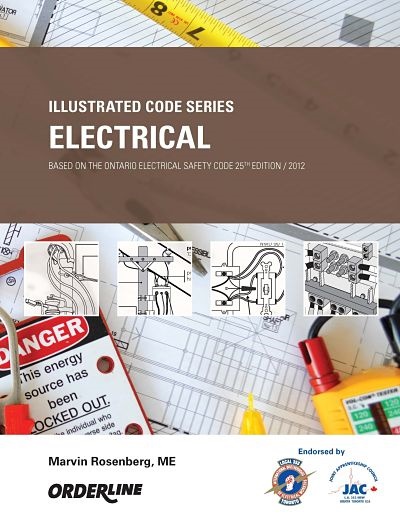The Canadian Electrical Code (CEC) is the national electrical code of Canada and has been adopted as law in Ontario, alongside the Ontario specific Amendments to the Canadian Electrical Code to become the Ontario Electrical Safety Code (OESC). Together, the code and the amendments epitomize the minimum standard for safe electrical installation practices in buildings and residences in Ontario, and advise engineers on how to build electrical infrastructure to Canadian standards.
OSPE spoke with Marvin Rosenberg, RSE, ME, a master electrician and electrical service inspector with over 30 years of collective experience about the 2015 OESC amendments.

“The Canadian Electrical Code is the hammer and nails for an engineer,” said Marvin Rosenberg, RSE, ME. “Essentially the Code book is the application, in physical or real terms, of what an engineer learns in school. Though many of the recent changes to the OESC appear small, a number of changes will significantly influence the day-to-day work of electricians and electrical engineers.”
Rosenberg’s philosophy is that following the Code book is always best practice, as straying from the Code tends to result in errors, omissions and over-specified parameters that can become large and unnecessary project expenses. “If you work off of an idea in your mind, there is a greater chance that the finished product will be overbuilt and oversized, without having understood the building’s basic needs,” said Rosenberg. He believes the problem is there is often a dichotomy between the drawings of engineering designers, who do not always consider the Code during the creative process, and the application of the drawings in-field by electrical contractors, who must make mandatory adjustments to adhere to the Code.
Employers are learning that in order to minimize wasteful costs, the key is to hire engineers that know, understand and build to code to reduce the weight of work and the size and amount of material required. This means that engineers must stay on top of changes like the 2015 OESC updates to remain competitive in the job market.
The 2015 updates strive to remove many of the anomalies that confuse electrical installations. Some of the recent changes include:
- a more definitive identification of terms and processes associated with installations
- information on the resized piping conduits
- elaboration on the wire ratings attached to rated pieces of equipment when they are not marked
Although the technical submissions that are used to inform the Code are made by engineers, the Code itself is written by lawyers. To address the Code’s use of legal jargon, Rosenberg is dedicated to simplifying the “how” and “why” of electrical installations to minimize risk for the electrical community.
On May 17, Rosenberg will be teaming up with OSPE to deliver a one-day course in Oakville called “Applying the 2015 Canadian Electrical Code to Your Work”. The course is designed as a refresher on how to use the Code in the workplace, with a focus on how to navigate Sections, Rules and Regulations. It will also review the relevant additions and changes to the 2015 edition. The course takes a unique approach to the CEC by discussing Part I and II of the national code within the framework of the Ontario Electrical Safety System, including the Ontario amendments.
“The goal of courses like OSPE’s is to help electricians and engineers see their work and technical knowledge through the lens of the Code book. It’s a valuable tool,” said Rosenberg.
For more information or to register for this course, visit OSPE’s Events Calendar on our website at https://ospe.on.ca.






Comments (3)
Great article.
Can you let us know if the Electrical Code has been updated since 2015? If so, where can we find the updated code?
Hi Eugene, the 28th edition of the Ontario Electrical Safety Code includes the Canadian Electrical Code, Part 1, plus Ontario-specific amendments. The Code reflects changes in technology and the market, feedback from stakeholders and technical reviews, and new safety insights. The Minister of Government and Consumer Services has approved the regulatory amendment to adopt the 2021 Ontario Electrical Safety Code (OESC), which comes into effect on May 5, 2022. https://esasafe.com/assets/files/esasafe/pdf/amendments/2021/2021-Ontario-Amendments.pdf
Leave a Comment